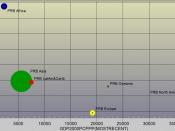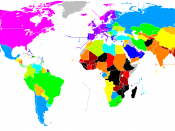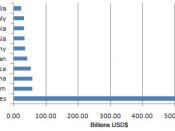Purchasing Power Parity TheoryIntroductionThe purchasing power parity theory is a theory which states that the exchange rate between one currency and another is in equilibrium when the currencies domestic purchasing powers at that rate of exchange are equivalent. (Economist, 2007) If this theory holds true it would mean that products that are made or bought in one country should cost the same amount in another country after the exchange rate is added to the equation. The purchasing power parity theory is helps us to understand the exchange rate and its impact but the theory does not always hold true and is not always completely accurate over time. Following is an example that shows why this is the case.
ExampleImagine that the U.S. Dollar (USD) is currently selling on the exchange rate market for 10 Egyptian Pounds (EGP). In addition, suppose that a soccer ball sells for $40 in the United States while in Egypt that same ball sells for 150 pounds.
Since 1 USD equals 10 EGP, then the ball would cost $40 if purchased in the United States. That same ball would only cost $15 if it was purchased in Egypt. Obviously a clear advantage exists to buying the ball in Egypt and it can be said that people in the market for soccer balls would be better off buying the soccer balls from Egypt instead of the U.S. If this is the decision that consumers make, one could expect some of the following situations to occur:1. U.S. consumers would want Egyptian Pounds so that they could purchase soccer balls in Egypt. This would cause them to sell their U.S. Dollars and buy Egyptian Pounds at an exchange rate office, thus raise the value of the Egyptian Pound compared to the U.S. Dollar.
2. The current...


